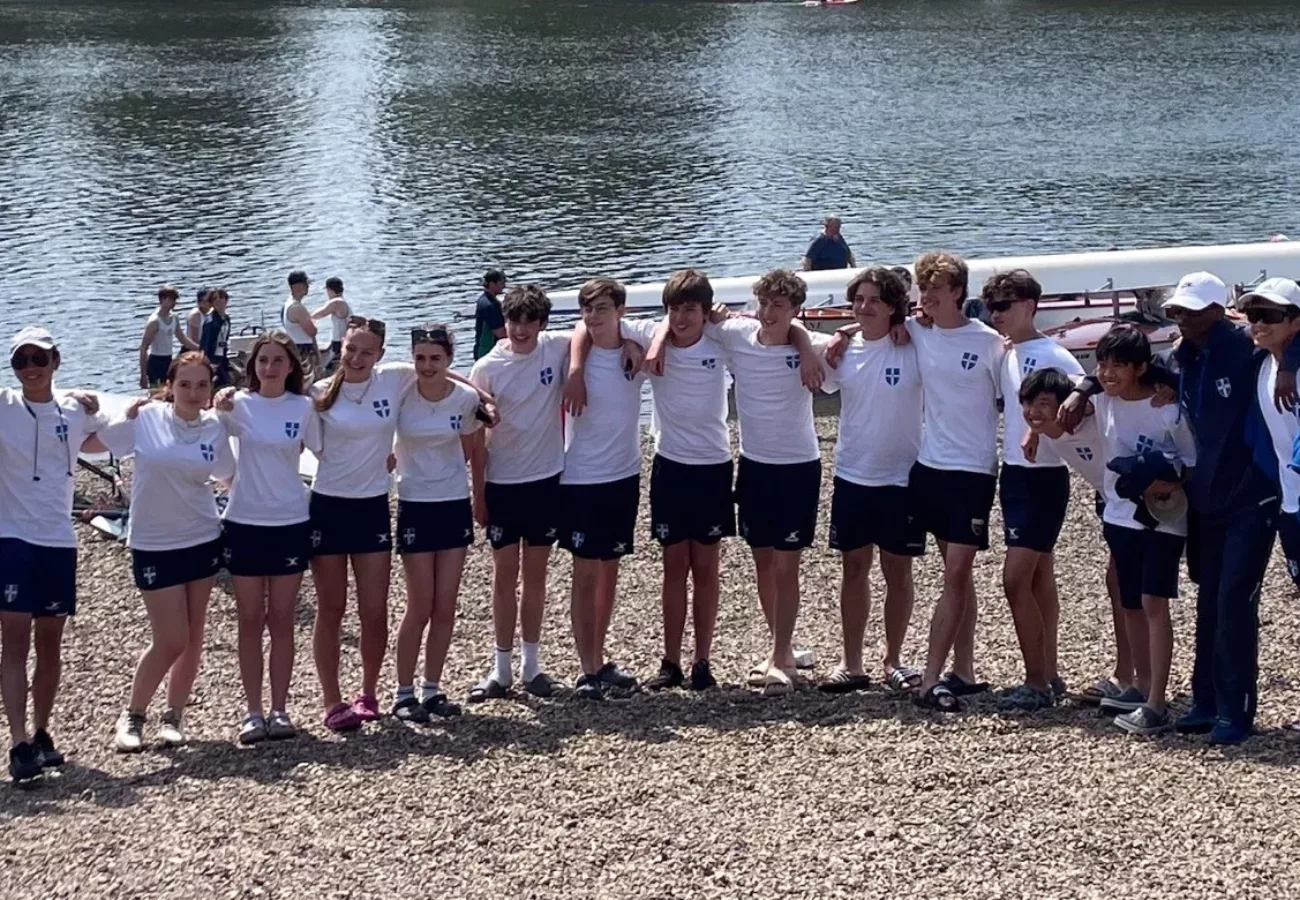Our new Head, Jude Lowson, sat down with the Kentish Gazette to talk about her appointment and plans for King’s. Below are some extracts from the interview:
With Christopher Marlowe and Michael Morpurgo among its famous alumni, thousands of pupils have soaked up the spectacular setting of the centuries-old King’s School in Canterbury. Steeped in history and set in the precincts of a UNESCO World Heritage Site, the breathtaking location of the city’s cathedral was the scene of the brutal murder of Thomas Becket in 1170.
After more than 1,400 years of the school being boys-only, the first girls were admitted to the sixth form in the 1970s, and it has only been fully co-educational since 1990. And now for the first time since it was formed in 597, one of the world’s oldest schools has begun a new chapter in its history by appointing its first female head.
It is all change at the school currently as builders work hard on the site’s historic architecture, taking advantage before pupils return in the autumn and new staff find their bearings on the expansive estate. Having only recently moved in, Ms Lowson is still getting used to life in the city. Apart from a visit aged 13 when she brought her French exchange partner to the city, she had not visited Canterbury before her interest in the prestigious role.
“I was not sure what it would be like to live in the precincts of the Cathedral,” she says.
“I had a few questions about how I even get my car in, use the one-way system in Canterbury and if you can get Deliveroo inside the precincts, but I have been struck by living in such an amazing place”.
“On one side of my house, I have this incredible vista of the Cathedral. I am surrounded by tourists who have travelled thousands of miles to see it and I have it there every morning”.
“You have this privileged position where you sometimes have it to yourself.”
Ms Lowson grew up in south London and attended local state primary schools before her parents moved to Belgium. When she returned to the UK aged 13, she boarded at Sevenoaks School before studying History at the University of Cambridge. But before her impressive career in some of the UK’s most prestigious independent schools, Ms Lowson worked in advertising at Bartle Bogle Hegarty.
“I had the sense as I was selling KFC to people that perhaps there was more to life than that and I could do something of more positive impact,” she adds.
“Teaching felt like a natural way to bring together so much I love.”
Ms Lowson’s most recent posting was at the King’s College School in Wimbledon and had previously worked at Whitgift School and Putney High.
And although she starts her job in September, Ms Lowson already has an exciting vision for the establishment, which has more than 1,300 pupils across its three schools, with about 70% boarding. She is keen to grow the bursary provision, which 65 pupils are already on.
Ms Lowson says there are so many elements of being community-focused which are working “really well” but there are “opportunities to strengthen those things further”.
“I would not imagine my approach to be secretive,” she says.
“I do not think that would be a word I would use to describe my leadership style or what the school would seek or desire going forward.”
“We are at the heart of this city and I do not want the school to feel like it is hidden away – I do not think that is a benefit to Canterbury or our pupils.”
Having spent many years at private institutions, Ms Lowson celebrates the need for independent schools in the 21st century.
“I am sometimes saddened by the debate surrounding independent schools,” she admits.
“It seeks to pit the two parts of the sector against each other but there is much we can learn from each other. I think there are myths about how independent schools operate. For example, independent schools do an awful lot of sharing their resources with local communities.”
“For so many schools, that desire to be accessible and to bring pupils in who will benefit from that education is a core element of what so many independent schools are trying to do.”
Ms Lowson argues there are “slightly fewer constraints” on private schools compared to their state counterparts as it enables them to be “innovative and offer subjects that are squeezed elsewhere.”
“A great example of that is you see the creative arts championed in independent schools and that is being squeezed [in state schools] sadly but, to an extent, understandably,” she adds.
“On the school side, the fact it has this long-standing genuine commitment to academic excellence but also sitting alongside co-curricular excellence – the development of the whole pupil – that for me is what education is about.”
“The fact that is so central to the ethos of the school was of crucial importance.”
“No school can compete with this sense of history, heritage, and connection to the cathedral.”
“I have got to know a few pupils in my time here getting to know the school over the past year and they all say what an impact it has on them.”
“It is unlike other schools.”



